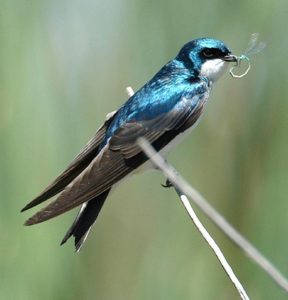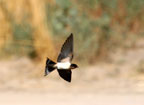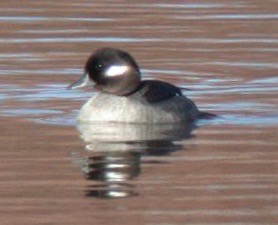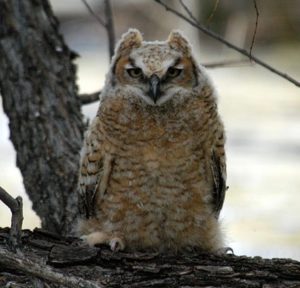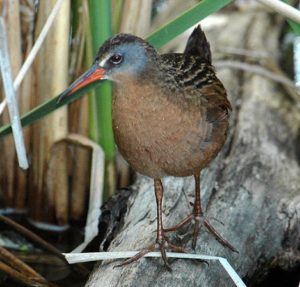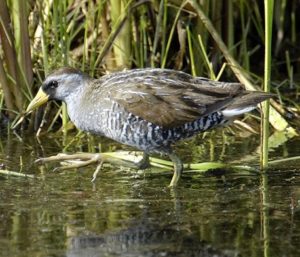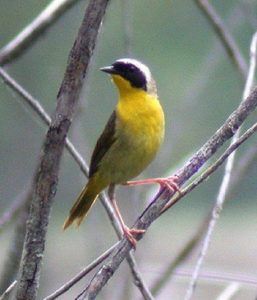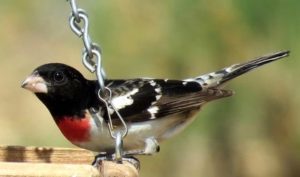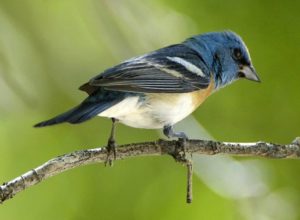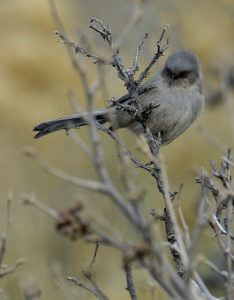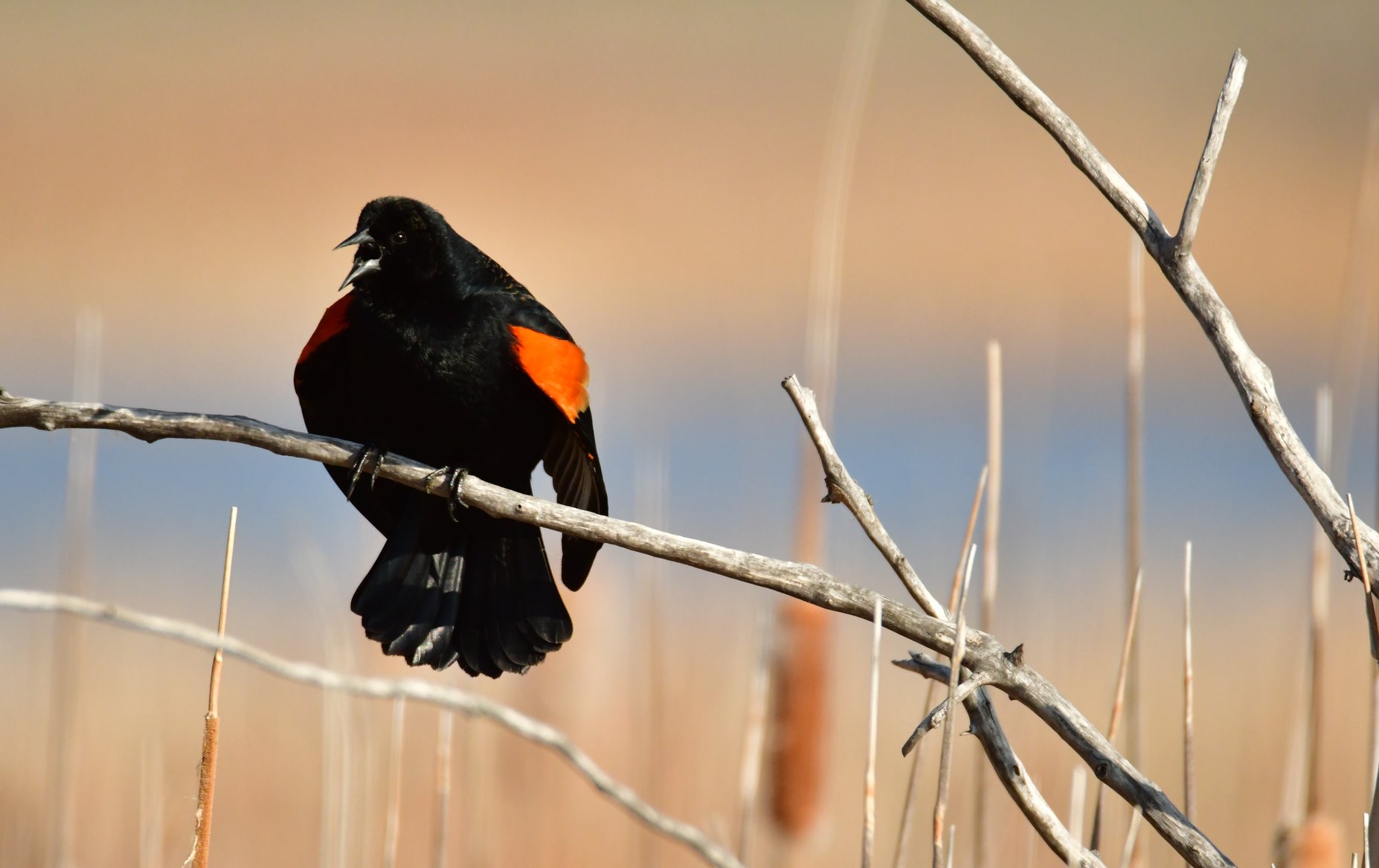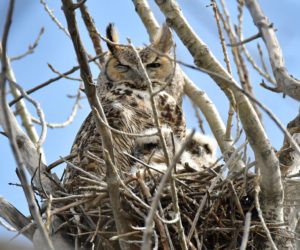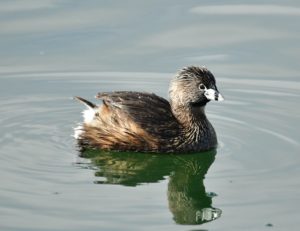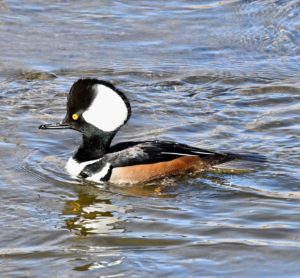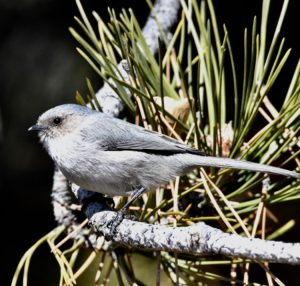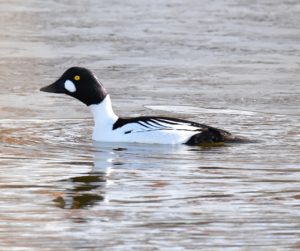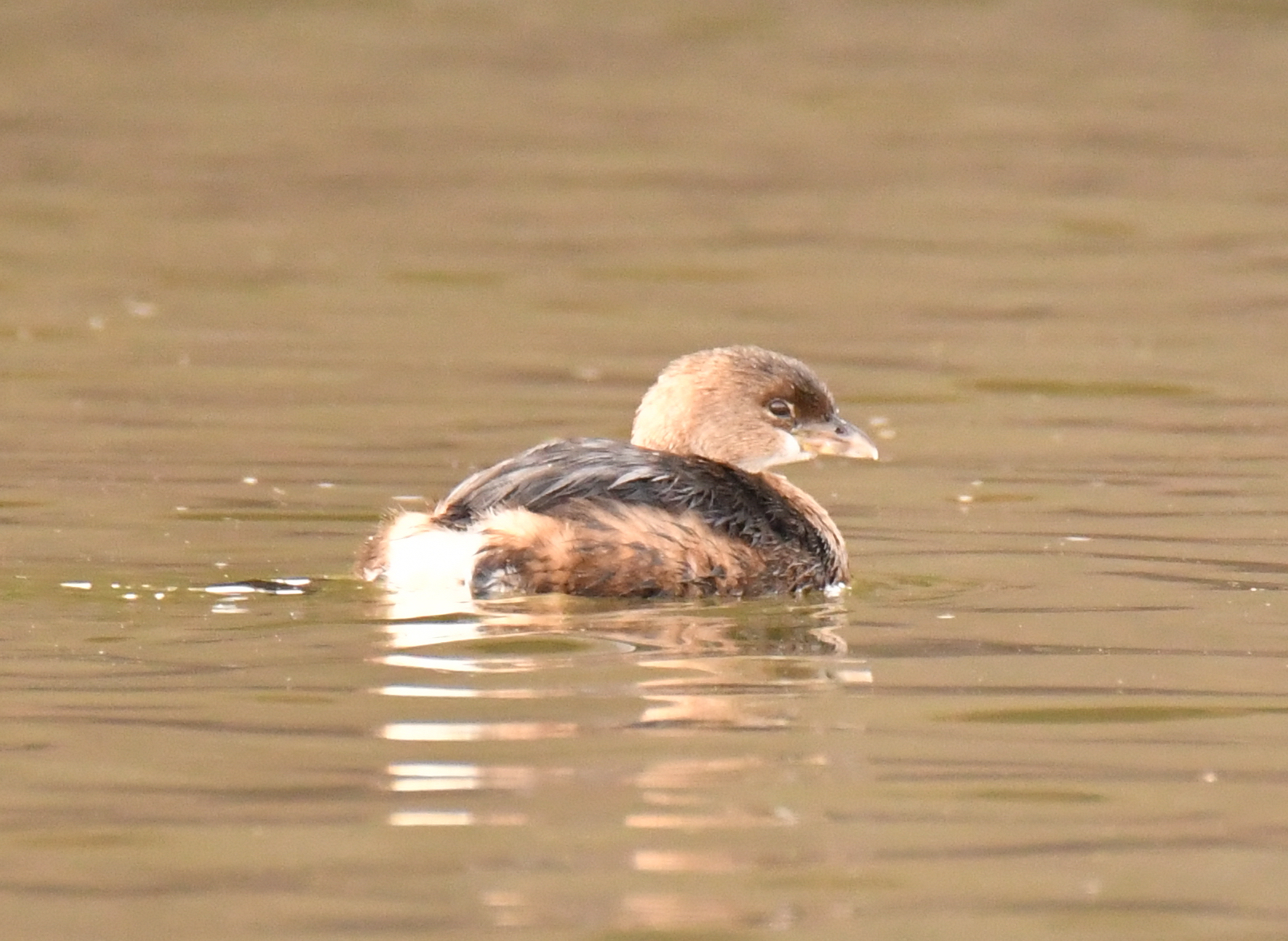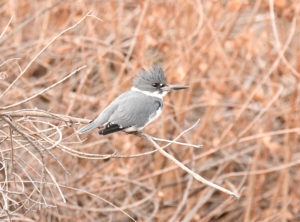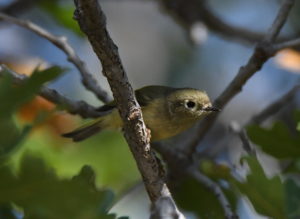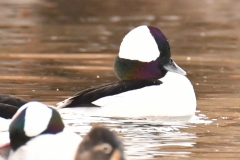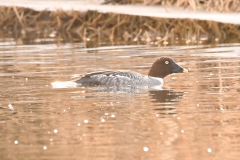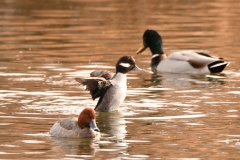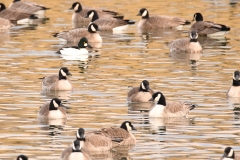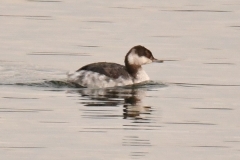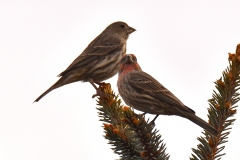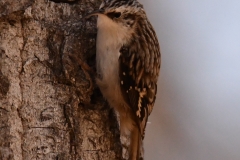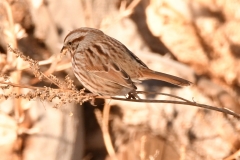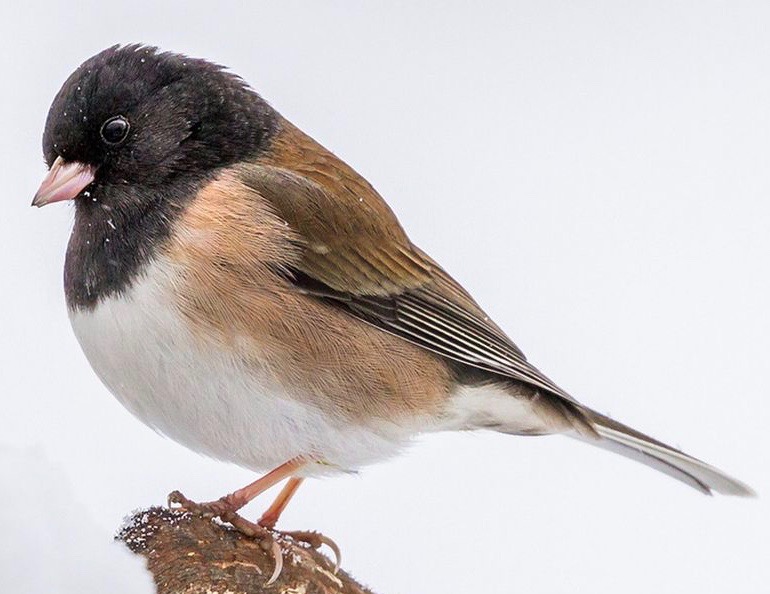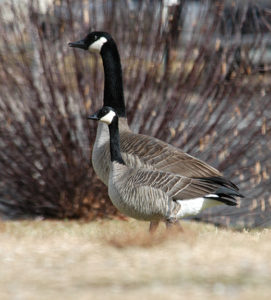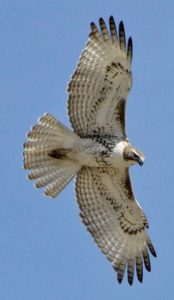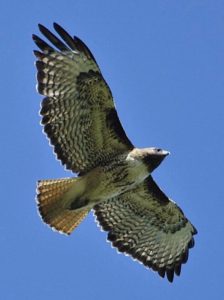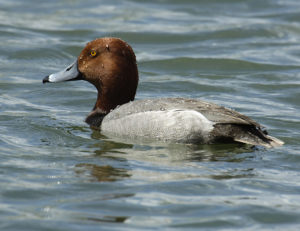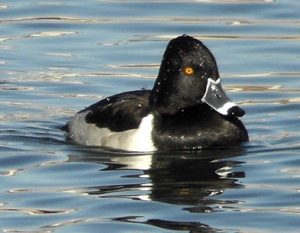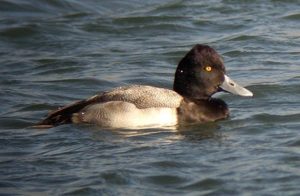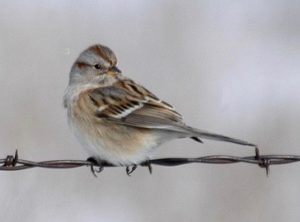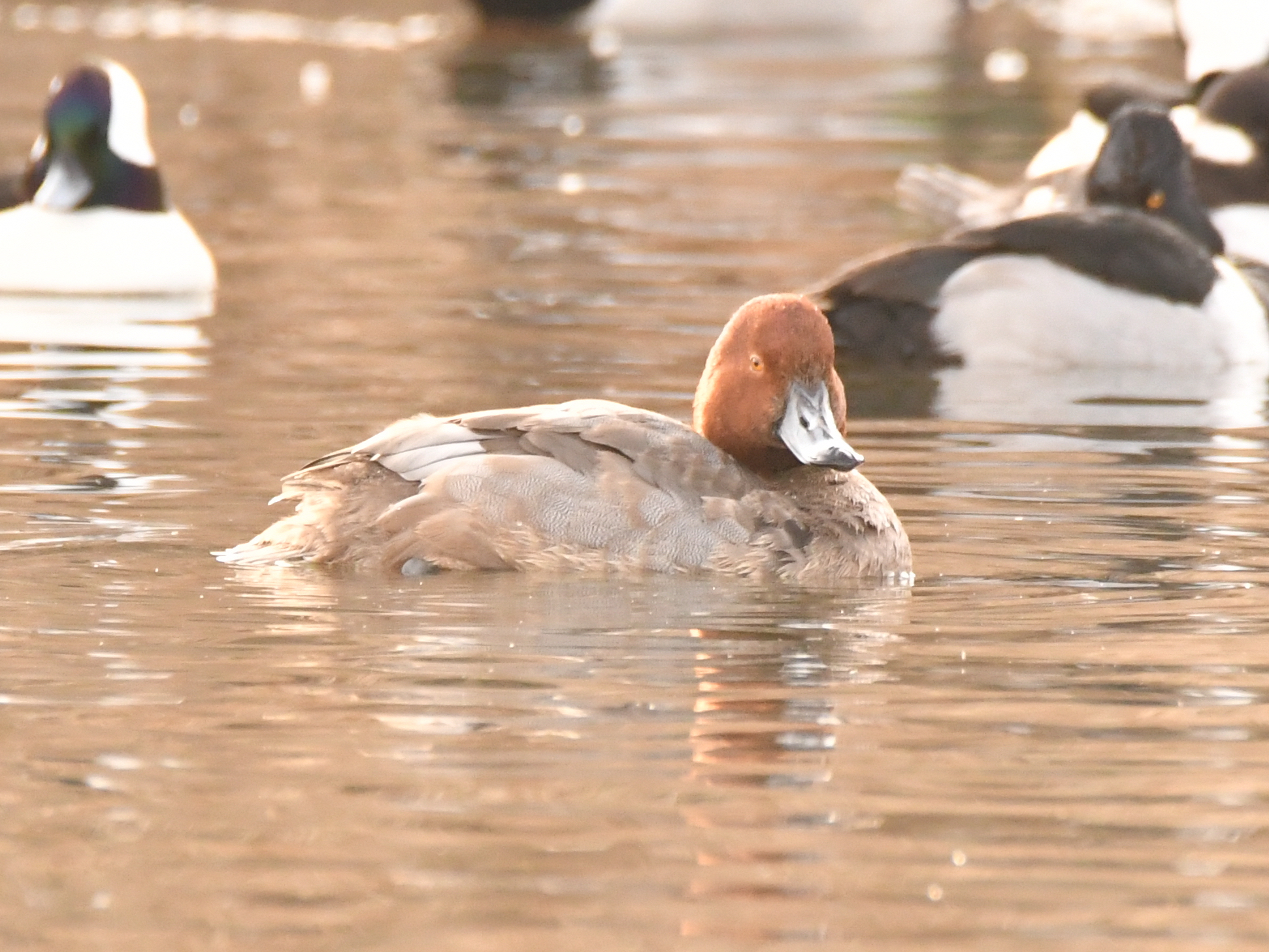
Despite some biting wind and cold on Saturday morning, fourteen brave birders embarked out to South Platte Reservoir to look for waterfowl and other winter birds on our first monthly bird walk of 2018. We racked up a grand total of 35 species in just under three hours in the field, including two rare birds for Colorado: a Horned Grebe and a Yellow-billed Loon.
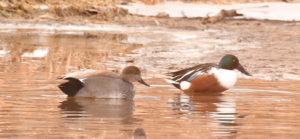
The South Platte River offered a wonderful bird viewing opportunity as it concentrated more than a dozen species into a very small area of open water, including this Gadwall (L) and Northern Shoveler (R). (c) David Chernack
Our walk took place in two segments: first, we surveyed the large South Platte Reservoir for waterbirds — including the Yellow-billed Loon — and second, we followed the South Platte River towards the Chatfield dam and counted waterfowl and songbirds. Due to our surveying of two distinct types of habitat on our trip, the waterbird biodiversity we observed was notably high: nineteen of the species we saw were waterbirds or waterfowl of some sort. These ranged from a large Canvasback on the reservoir to a raft of tiny Buffleheads along the river to a small group of dazzling Wood Ducks below the Chatfield dam.
The most numerous species spotted along our route were, as usual, Canada Geese — along with their close relatives, Cackling Geese. Though visibly very similar, the two species can be told apart by their calls and size, with the Cackling Goose being far more compact than its Canadian cousin. Also in abundance were Mallards and Buffleheads, with 44 and 41 individuals of each species seen respectively. Mallards and Buffleheads displayed the two principal duck feeding behaviors: dabbling and diving. While the Mallards skimmed the water’s surface and dipped their fronts underwater for aquatic plants, the Buffleheads dove towards the river bottom to forage for small aquatic crustaceans and other prey items.

Cackling geese lived up to their name on our walk, as their cacophonous calls rivaled the road noise from nearby C-470. (c) David Chernack
One of the Buffleheads’ cousins in the genus Bucephala, the Common Goldeneye, was another delight to see along our route. The Goldeneyes, like many of the other ducks observed foraging along the river, are only in Colorado as winter visitors — they breed across Canada on wooded lakeshores — but set themselves apart as cavity nesters; Wood Ducks and Hooded Mergansers were some other ducks we spotted which will nest in natural cavities or abandoned woodpecker nests come springtime. Four members from genus Aythya, which includes several species of diving duck worldwide, were on display as well: the Lesser Scaup, Ring-necked Duck, Redhead, and Canvasback were all visible. Many of the males showed off their bright breeding plumage, ready to perform elaborate courtship displays to impress females of their species. However, both of the grebe species we saw — the Pied-billed and Horned grebes — donned their drab non-breeding plumage.
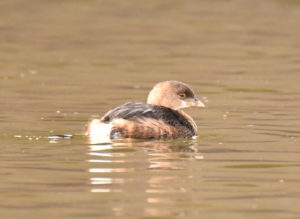
While not as dazzling as the goldeneyes or mergansers, Pied-billed Grebes are a Colorado winter birding staple we were happy to observe foraging alongside other ducks and geese. (c) David Chernack
While all of our waterfowl sightings were exciting, the most anticipated highlight of the morning was a rarity to Colorado: a Yellow-billed Loon (Gavia adamsii). The loon was observed on the far northern side of the South Platte Reservoir, diving intermittently to forage. This magnificent species has only been observed in Colorado a handful of times; it can be more reliably observed on the Arctic coast where it breeds during spring and summer.

This female Belted Kingfisher had words with us when we stumbled upon her feeding grounds! (c) David Chernack
Yellow-billed Loons are poorly understood birds: while five distinct breeding groups are recognized in Canada, Alaska, and Siberia, their diet and the exact size of their global population are not concretely known. (Estimates place it at around 10,000 individuals, with around 4,000 of those breeding in northern Alaska.) The species is rated by the International Union for the Conservation of Nature (IUCN) as Near Threatened, and “it is suspected to be undergoing a moderately rapid population decline owing to unsustainable subsistence harvest and almost qualifies for listing as threatened” according to the IUCN’s “Red List”; the potential expansion of Arctic drilling on their breeding grounds, oil spills, and climate change are considered to be other threats to the loon. Needless to say, our group was extremely lucky to observe such a mysterious bird visitor so far inland. For more information about the Yellow-billed Loon and its conservation, visit the National Audubon Society’s online field guide entry about this fantastic species.

While not an impressive capture at a third of a mile away, this Yellow-billed loon was still the darling of many a birder as we surveyed the reservoir.
Though the waterfowl both rare and common stole the show, we also observed a good number of songbirds, raptors, and other birds along our way. Four Red-tailed hawks, an American kestrel, and a passing adult Bald Eagle rounded out our raptor tallies, while songbirds including song sparrows, brown creepers, and a single American tree sparrow were also a treat to see.
Check out even more photos of this morning’s birds as well as our full species list in the gallery below!
Your humble scribe and photographer,
David Chernack
South Platte Reservoir and Vicinity, Jan 6, 2018
35 Species
23 Cackling Goose
98 Canada Goose
5 Wood Duck
21 Northern Shoveler
5 Gadwall
44 Mallard
1 Green-winged Teal
1 Canvasback
12 Redhead
6 Ring-necked Duck
26 Lesser Scaup
41 Bufflehead
17 Common Goldeneye
6 Hooded Merganser
14 Ruddy Duck
1 Yellow-billed Loon
1 Horned Grebe
2 Pied-billed Grebe
1 Bald Eagle
4 Red-tailed Hawk
36 American Coot
4 Ring-billed Gull
2 Eurasian Collared Dove
2 Belted Kingfisher
1 Northern Flicker
1 American Kestrel
2 Black-billed Magpie
12 American Crow
1 Common Raven
5 Black-capped Chickadee
1 White-breasted Nuthatch
2 Brown Creeper
1 American Tree Sparrow
3 Song Sparrow
2 House Finch



